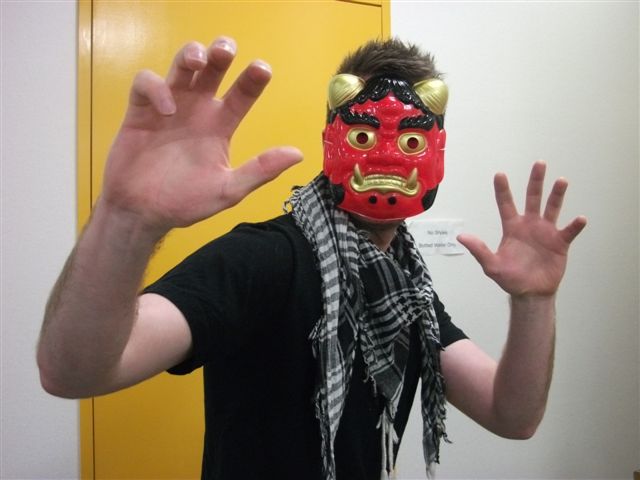Today, we bring you another blog post from Motoko, JapanesePod101.com lesson creator, host and Office Party Planner! Motoko will be sharing more bilingual posts on our blog, so check back often and leave a comment!
Hi everyone, Motoko here!
In the beginning of summer this year, the Innovative Language staff went on a day trip. Today I’d like to talk about that. We chose peach-picking for fun, and soba-making so that everyone could try a traditional Japanese food! We made soba in a wonderful nihon-kaoku, a traditional type of Japanese house.
Do you know what soba is? Soba is a famous type of noodle in Japan that is a greyish-brown color. It gets this color from a special type of flour called sobako that is used to make it. You dip the boiled soba into a dip called tsuyu made from fish broth, and eat it. Adding onions and wasabi to the tsuyu give it a more grown-up flavor. Soba comes in two types: cold zarusoba, and warm kakesoba, but this time we had zarusoba.
Soba is made from sobako and flour. First, you mix the two types of flour into a large bowl called a hachi. You can use chopsticks, but it seems like it’s more common to use your hands. Next, you add water. Then comes the hard part – you have to then knead the soba dough a lot. The teacher made it look easy, but it requires a lot of strength since the dough is not that soft. Apparently, the action of kneading the dough is an important step to making delicious soba. Once you’re done kneading, you flatten the dough with a rolling pin. Then, you place the soba on a wooden board called a komaita, and cut it with a special knife called a bocho. If you cut it thinly, you get great soba. If you cut it thickly, you get soba that looks like udon. (Which still tastes good…it just might be a little hard.)

Everyone worked hard at making soba, getting themselves covered with flour in the process. After making it, we boiled it and ate it ourselves. Because the noodles are raw, they take only a minute and a half to cook. Soon after boiling them, you do what’s called shimeru in Japanese. Shimeru refers to rinsing the noodles with cold water so that they don’t get too soft. When you do this, it gives the noodles a nice chewy texture. This isn’t done with Italian pasta!


Then we got on the bus to go peach-picking. Is it common to go fruit-picking in your country? In Japan, there are a lot of opportunities for fruit-picking that change with the seasons. Cherry-picking, peach-picking, grape-picking, and pear-picking are some of the well-known ones. You go to the field to pick and eat a lot – depending on the place, there may be a limit to how much you can eat. The place we went had an all-you-can-eat deal that lasted for 40 minutes. For 40 minutes, you can pick and eat as much as you want. Apparently, the good peaches are at the ends of the branches, so everyone tried hard to get the highest ones.

The person who ate the most was a family member of one our Innovative Language staff. They ate seven peaches in 40 minutes! As for me, I ate three. The peaches I chose were big, so even after just three, I was really full!
Readers, you should definitely try your hand at making Japanese food – not just eating it. I had never made soba before, and I’m Japanese! It’s sure to be a memorable experience.




























